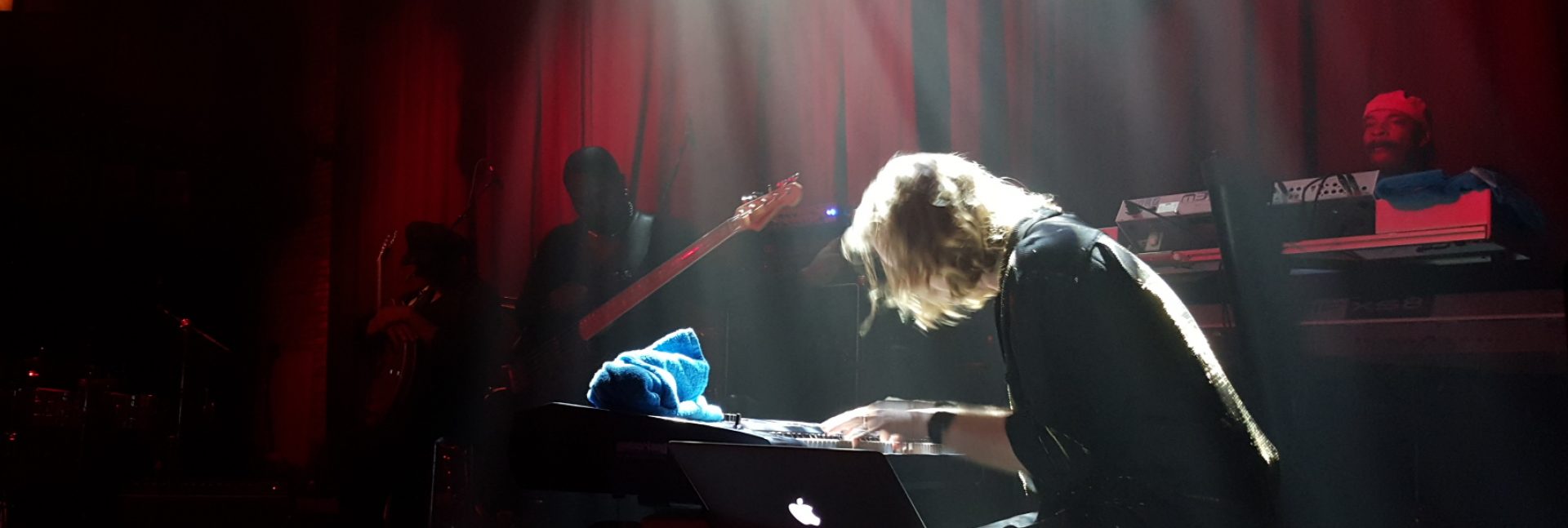While it probably doesn’t seem like this would help – let’s face it – if you are unwilling to play a lot of wrong notes, you’re never going to learn how to do anything hard. And improvising is hard! It isn’t something that you can do safely, with the assurance that you will look good while trying to get good at it. You won’t look good. You won’t sound good — and the sooner you realize this, the sooner you will be able make real progress.
Strangely, we are from a culture that reinforces the idea that we should always look good. I mean there are actually people who think you should look good when you’re sick; when you get up in the middle of the night; or when you haven’t slept for 36 hours.
Get the picture?
So, now that that’s said – what is the best strategy for playing wrong notes and actually making progress at the same time?
De-emphasizing Note Value
I have found that the best way to start is by de-emphasizing note values – focussing instead upon rhythm, texture, density and shape. Music is way more than just the notes you play, and note selection tends to be the very thing that stops people in their tracks. Thus, my “Wrong Note Strategy.”
The following are possible points of departure for playing wrong notes – properly:
Melodic Shape – Conceptualize a melody – don’t get too specific with notes, but think only in terms of the overall shape of the line. Does it go up? Does it climb? Does it jump? If you have a hard time, try creating a melody on your instrument that is shaped like something else. I think it was John Cage (a rather famous composer) that used the New York skyline as the basis for a piece of music. My vote is, if John Cage can do it, we can too.
Density – Think about density. Are there a lot of notes all close together? Or are they spaced wide apart? Density shape is determined by where there is little space between notes, and where there is a lot of space. It is applicable melodically, harmonically and rythmically. I think there are even methods of encoding data that use this approach (can’t remember the name of it). I figure, if it’s OK for Intel to use this concept for data, I think it’s OK for us to use it too.
Rhythm – What about a rhythmic approach? What if note values were totally unimportant, and we thought only percussively about the music? Like using blocks of notes – dissonances as though playing drums with the keyboard (or whatever)? It seems to have worked for legions of 20th Century composers, so why not for us?
Texture – How about making sounds – funny sounds – on our instrument? I remember working with a violinist from the LA Philharmonic, who told me she couldn’t improvise. I asked if she could make noises. She said, “Oh sure! I like making really funny noises like this; and this; and this.” We proceeded to “play funny sounds” for the next hour and a half, experimenting with all sorts of melody, harmony, rhythm and texture – coming up with some really beautiful stuff, after which she asked, “was that improvising?” I said, it sure was, and she was totally changed by the experience.
I love that story, because it really shows that all we really need is permission to play “wrong” notes. Once we are willing to do that, then we can experiment – often on a very high level – with the vital textural, rhythmic, shape and density aspects of music.
It still communicates, it’s genuinely creative, and it really is music.
The unwillingness or fear of making mistakes is perhaps our cultures deepest mistake – and actively prevents people from progressing to the next level.

Hi Ben – I’ve nominated you for the Blogger Recognition Award. Feel free to skip if it isn’t of interest or time is too tight. Will completely understand. Keep being wonderful you. https://yourguidedjournal.com/2017/01/16/blogger-recognition-award/
Thank you m’dear. Appreciate you. Not sure how to participate in the award since I’m a newbie here!
How about I let you know how I find it and whether it was productive to participate. 🙂 In brief, you would copy and paste the text from my post – edit it to make it your own, and list links to 15 blogs you like. It has taken me about 90 minutes so I’ll be curious to see if that’s something I’d do again. If it helps reach new readers, great. I’ll see. 🙂
Thanks Naomi, I think I’ll watch and wait for now…
I found you through Naomi’s nomination, and I enjoyed this post. I look forward to seeing how your wisdom and passion will be expressed here. Life is precious! : )